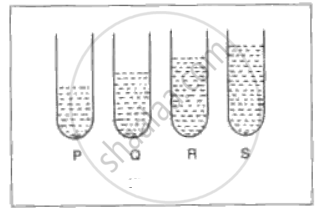Advertisements
Advertisements
Question
When acoustic resonance takes place, a loud sound is heard. Why does this happen? Explain.
Solution
When acoustic resonance takes place, a loud sound is heard. This is because the natural frequency becomes equal to the frequency of externally applied force hence a loud sound is heard.
APPEARS IN
RELATED QUESTIONS
Define the Resonance phenomenon?
In the diagram below, A, B, C, D are four pendulums suspended from the same elastic string PQ. The length of A and C are equal to each other while the length of pendulum B is smaller than that of D. Pendulum A is set into a mode of vibrations

1) Name the type of vibrations taking place in pendulums B and D?
2) What is the state of pendulum C?
3) State the reason for the type of vibrations in pendulum B and C.

The diagram above shows a wire stretched over a sonometer. Stems of two vibrating tuning forks A and Bare touched to the wooden box of the sonometer. It is observed that the paper rider (a small piece of paper folded at the centre) present on the wire flies off when the stem of vibrating tuning fork B is touched to the wooden box but the paper just vibrates when the stem of vibrating tuning fork A is touched to the wooden box.
1) Name the phenomenon when the paper rider just vibrates.
2) Name the phenomenon when the paper rider flies off.
3) Why does the paper rider fly off when the stem of tuning fork B is touched to the box?
Give one example to illustrate forced vibrations.
In fig. , P, Q, R and S represent test tubes each of height 20 cm which are filled with water upto heights of 10 cm, 14 cm, 16 cm and 18 cm respectively. If a vibrating tuning fork is placed over the mouth of test tube Q, a loud sound is heard.
(i) Describe the observations with the tubes P, R and S.
(ii) Give the reason for your observation in each case.
(iii) State the principle illustrated by the above experiment.

What do you mean by resonance? When does resonance occur?
Explain why stringed musical instruments, like the guitar, are provided with a hollow box.
Explain why are soldiers asked to walk out of step while crossing bridges?
